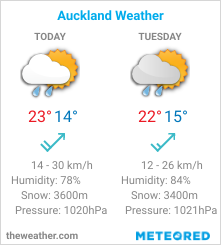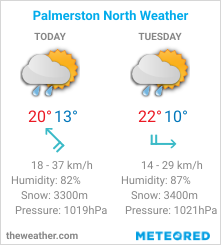It's taller than Nelson's Column and generates enough energy to power 5,500 homes - but does Britain really need a super-sized £3.5bn aircraft carrier?
|
When it’s finished will be home to 40 aircraft and 700 crew
HMS Queen Elizabeth is being built in sections, which are then transported by sea to the Number 1 Dock at Rosyth, just north of Edinburgh, to be welded together
Today it looks like a ramshackle tower block – its nine storeys are covered with makeshift scaffolding and white plastic sheeting that billows in the breeze.
But this is a huge chunk of HMS Queen Elizabeth, Britain’s new class of aircraft carrier and the largest warship ever built for the Royal Navy.
HMS Queen Elizabeth will be three times the size of HMS Illustrious, our sole remaining carrier currently being used to transport helicopters and commandos, and will be second only to the giant American nuclear-powered Nimitz-class carriers.
While debate has focused on rising costs (up to £7 billion for two carriers) and what aircraft should fly from the ships, construction work has been quietly continuing at six shipyards around the country.
HMS Queen Elizabeth is being built in sections, which are then transported by sea to the Number 1 Dock at Rosyth, just north of Edinburgh, to be welded together
‘Our contract was to build two ships, and we’ve just been getting on with it,’ says Geoff Searle, programme director for the Aircraft Carrier Alliance, from his office at Rosyth, in the shadow of the Forth Rail Bridge.
‘They are the largest surface warships ever to be built in the UK, weighing in at 65,000 tons, offering four acres of sovereign territory, and set to be in service for up to 50 years.
'They are a significant diplomatic tool and they can go anywhere and do anything, from disaster relief and delivery of aid through to war fighting.’
Each of the ship's two propellers weighs 33 tons - four times heavier than a double-decker bus
It might not look sleek and seaworthy on the outside yet, but below decks and already recognisable inside the ship are the Junior Rates’ dining hall and galley (with boilers and deep-fat fryers ready to be fitted) and broad corridors lined with cabins, as well as machine rooms, water-treatment equipment, and space for ammunition storage and the weapons handling bay.
What currently looks like a flat roof is actually part of the flight deck, which will eventually be 280 metres long and 74 metres wide.
At the end of this week the dock here will be flooded, and this huge chunk of metal, known as Super Block 03, will be floated out into the bay.
Another 6,000-ton forward section, which has just been delivered by barge up from Portsmouth, will then be guided in to the dock before Super Block 03 is floated back in behind it.
Once the light is blocked out of the programme director’s office windows next to the dock, the team will know the first aircraft carrier is nearly complete. All it will need then is some planes to fly from it.
In the era of cyber warfare and stealth technology, the idea of a giant floating steel platform might seem absurdly cumbersome and arcane. But aircraft carriers remain the ultimate symbol of naval power.
‘People talk about them as Cold War relics but I don’t support that,’ says Dr Lee Willett, Senior Research Fellow in Maritime Studies at the Royal United Services Institute.
‘Their use has evolved, and they have proved versatile and effective as a mobile airfield that you can park anywhere.
'Just think of the USS Carl Vinson, which was the first aircraft carrier into action post 9/11 off the coast of Afghanistan.
Sections of Lower Block 02 under construction in Portsmouth
'It was also the lead American ship off Haiti after the earthquake – its aircraft were removed and replaced by helicopters to ferry water ashore and evacuate casualties back to the ship for treatment. UK carriers could do the same. We are, after all, an island nation with global interests and global responsibilities.’
This year’s 30th anniversary of the Falklands War reignited passions about aircraft carriers, but it’s not just nostalgic armchair admirals who have felt the loss.
It was widely believed that our campaign over Libya could have been easier, and cheaper, if we’d had a functioning aircraft carrier with planes to fly from it rather than relying on a land base in Italy.
‘The French carrier Charles de Gaulle certainly proved her worth off Libya,’ says Christian Le Mière of the International Institute for Strategic Studies.
‘Carriers can work anywhere and they are also mobile and therefore harder to target.
'That the U.S. is pursuing its programme for a new class of carriers confirms that these are extremely useful and capable ships.’
Russia, Brazil, India, France, Italy, Spain and Thailand currently have carriers, while the U.S. has 11, and is working on delivering the first of its new Ford-class supercarrier in three years’ time.
After years of aircraft carrier envy, China has also bought a rusting former Soviet vessel, Varyag, from Ukraine.
Lower Block 03, built in Govan, approaches Rosyth having passed under the Forth Rail Bridge
Initial claims were that it was to become a nightclub, hotel and conference centre, but China has now disturbed her neighbours and America by refitting her and sending her out for sea trials.
‘The Chinese have said they will just use the Varyag for training,’ says Le Mière, ‘but if you have a carrier then you tend to like to use it – it’s an expensive piece of kit.’
Meanwhile China continues work on building her own vessels.
‘While we have problems justifying the cost of our carrier programme and some say we can’t afford them, Brazil, India, China and our old friend the Russians are pushing ahead with them,’ says Dr Willett.
The 'Bulbous Bow', built at Appledore, Devon
‘We should at least ask why they are doing it, and what they see that we don’t.’
Our own carriers have been a long time coming. The idea was first mooted in the Strategic Defence Review of 1998, when the plan was for the first of two ships to be delivered this year.
By the time of the 2010 Strategic Defence and Security Review the Government had decided we would operate just one carrier, leaving the other mothballed.
They also announced that we would no longer buy Lockheed F35B ‘Short Take-Off and Vertical Landing’ aircraft to fly from it, but instead deploy the more conventional F35C jets, which can carry more weapons and have a longer range.
Then last month the Government reversed this decision and said we would go back to the F35B planes – having discovered it would cost an additional £2 billion, and cause further delays to construction, to fit just one carrier with the catapults and arrestor gears required for the F35Cs.
Margaret Hodge, chair of the Public Accounts Committee, called the situation a ‘fiasco’.
Dr Willett, however, puts a more positive spin on the current situation.
‘This does at least now raise the possibility of us having two operational carriers,’ says Willett, ‘although that will be one of the tough decisions to be made at the next defence review in 2015.’
There are a few noticeable changes to the UK’s new class of aircraft carrier compared to the old designs.
‘The most visible is the two islands rather than just one on the flight deck,’ says Geoff Searle.
‘The forward one is for navigation of the ship, and the aft for air-traffic control and flight operations. To the side of the ship are two big lifts to bring aircraft up from the hangar.
'The older carriers had lifts in the middle of the flight deck, which meant that when you were bringing aircraft up and down you couldn’t do flight operations.’
The forward section of the ship leaves Portsmouth to travel by barge to Rosyth
There’s also a ‘highly mechanised weapons handling system’ to select and deliver weapon loads from the two large magazines to aircraft in the hangar, which saves on crew numbers. But, as programme director Geoff Searle puts it, ‘fundamentally they are big ships’.
The entrance to the dock at Rosyth had to be enlarged so the carriers would fit, and dredging is under way at Portsmouth too for what will be their home base. Size will also make a big difference to those serving on board.
‘There’s room to play football in the passageways and even in the usually cramped machinery spaces you could set up a few table tennis tables,’ says assembly director Stuart Leonard.
The plan remains, for now at least, for HMS Queen Elizabeth to be handed over to the Royal Navy in early 2017 and be fully operational by 2020, with sister ship HMS Prince Of Wales two years behind.
Searle himself is now moving on to work on the Royal Navy’s next ‘future ship’ – the Type 26 Global Combat ships that will replace existing Type 23 frigates. Among their tasks will be the defence of the aircraft carriers.
‘Physically we will never build anything as big as this,’ he says, ‘but the UK’s committed to continue to design and build complex warships.
'The Type 26 programme will start up in three or four years’ time, so a lot of the 700 apprentices we have working on the carriers now will be the experienced tradesmen and women of the future.
'British manufacturing industry can still produce some very capable stuff.’
It’s just up to the Americans now to deliver the planes – otherwise there’ll be room for more than just a few table tennis tables on HMS Queen Elizabeth’s flight deck.
MOST READ NEWS
Too fat for murder: TLC's Half-Ton Killer tells shocking...
I'll have your job for this! What police say foul-mouthed...
Paralysed teenager who has been on life support since birth...
Britain's bravest parents: A son who died at 16 - then baby...
'I liked to shoot everything - women, kids... it was kind of...
Salvation Army hostel turned away 17-year-old rape victim...
The £1.2million motorhome with a state-of-the-art kitchen,...
Mother who tortured her baby son is battered with garden...
Majority of homeowners in UK to be mortgage-free within...
'It's all been blown out of proportion': Stepfather defends...
Bank worker, 24, who stole £46,000 to fund boob job and...
Horror at New York zoo as man, 25, is brutally mauled by a...
GAME REVIEWS
GADGET REVIEWS
ADVERTORIAL FEATURES
The Vanishing PointYour child gone... the gripping new thriller from Val McDermid, the creator of ITV’s Wire in the Blood.
WIN the holiday of a lifetimeTourism Victoria has teamed up with Emirates and Trailfinders to offer a chance to win the holiday of a lifetime
Be Gum Smart83% of people are showing signs of gum disease. Check your symptoms now >
Read more: http://www.dailymail.co.uk/home/moslive/article-2152676/HMS-Queen-Elizabeth-Its-taller-Nelsons-Column-generates-energy-power-5-500-homes--does-Britain-really-need-super-sized-3-5bn-aircraft-carrier.html#ixzz27CDcwYmV
Follow us: @MailOnline on Twitter | DailyMail on Facebook











Britain is not a world power. It is a middling European country of middling European importance - Jolyon Some perspective please. Britain is one of 7 nations out 178 nations with full, mobile nuclear capability, hence UN security council membership. Additionally membership of G8 by any definition that is top table not middling. UK is one of Top 3 economies in Europe and number 1 militarily in Europe (only France and UK have any significant force on a European level). How does that equate to middling European importance? Do engage Brain next time..
- rich , Manchester, 04/6/2012 19:01
Report abuse